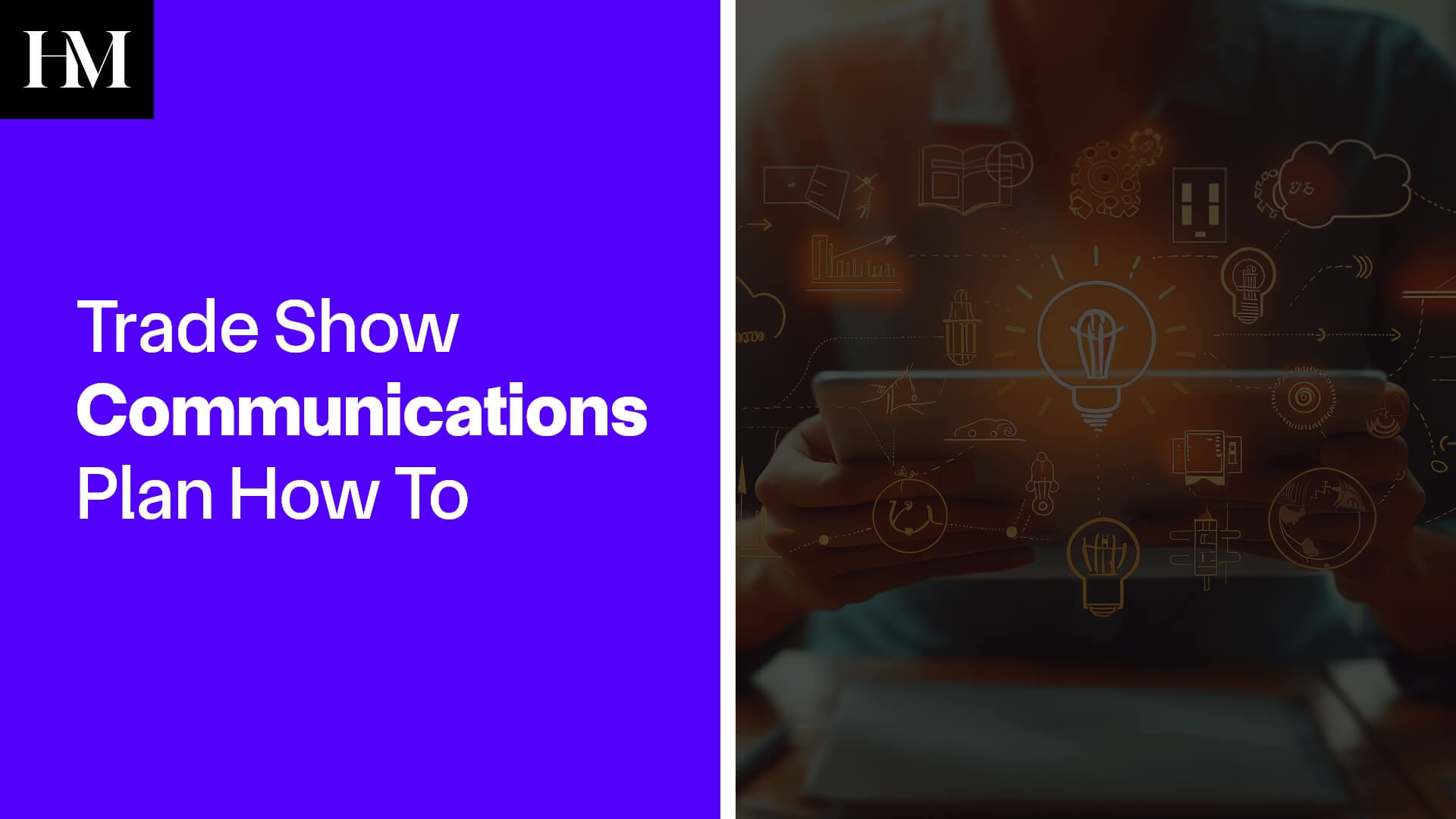A well-crafted communication strategy can greatly influence the success of your trade show calendar, helping you engage your target audience, sustain valuable connections, and ultimately ensure the best return on your investment. In this guide, we will outline a timeline of communication opportunities, discuss the importance of internal communications, and offer tips to help you optimize your trade show communications plan. Ready, Set, Communicate!
How to plan and implement your trade show communications plan
Define your objectives and target audience (6-12 months before the event)
Before you can create a successful communication plan for your trade show, you need to have a clear understanding of your objectives and target audience. Are you looking to generate leads, increase brand awareness, or establish partnerships? Are your attendees likely to be decision-makers who can influence a sale? Your audience and your goals will influence your messaging and communication tactics throughout the event.
Decide how you are going to deliver your messaging
Understanding what to communicate and when is crucial, but knowing how to effectively deliver that information is even more important. Your aim should be to engage attendees and actively involve them in your event.
Here are the platforms to consider:
- Essentials
- Optimized event landing page on your website or calendar: Create a dedicated page (or listing) with up-to-date information about your event, making it easy for interested individuals to find everything they need in one place.
- Email marketing: Within your email marketing platform, segment a list of targeted recipients for your event comms. This can begin broad (i.e., all contacts) and widdle down as the event progresses to include confirmed attendees, “touched” attendees, promotional winners, etc. Develop a robust campaign to announce your business’ inclusion in the trade show, events and opportunities to look forward to, reminders of scheduled sessions, and post-event thank yous and followups.
- Social media
Different social networks cater to unique audiences, so use the platforms you know cater to your audience.
-
- Twitter: This platform is suitable for business and non-business events alike, providing a space for real-time updates, feedback, questions, and engagement. Make sure to share official handles for the event, speakers, hosts and include the verified event hashtag
- Facebook: If your target audience is active on Facebook, consider creating an event, or sharing the trade show event, to encourage more invitations and interactions within the Facebook community.
- Instagram: Use Instagram to share high-quality previews of speakers, venues, and other elements that convey your event’s story. Remember to tag your event and utilize event hashtag.
- LinkedIn: A strong play for B2B audiences, as well as another valuable tool for B2C. LinkedIn posts can be as straightforward as who/what/when/where/why messaging, and as promotional as highlighting specific events and features within the trade show. You can also consider LinkedIn messaging to a specific group and reaching out to colleagues and contacts in advance to set up meetings at the event.
- Mobile app
-
- If you already have a mobile app for your business, consider creating an event tool within your app, and implement push notifications. This can greatly enhance communication with attendees; providing real-time information on your special events, and reminders of their individual sessions. You can also work with the trade show to send messaging through their app as well, if they have one. This route does not allow the same type of personalized messaging as using your own platform – though your messages/pushes would reach the entire attendee list with the downloaded app.
Craft your messaging (4-6 months before the event)
Once you’ve defined your objectives, audience, and messaging channels, it’s time to develop your key messages. These should be concise, memorable, and tailored to your target audience. Consider creating a message map to ensure consistency across all your communications. What’s that, you say? it’s this, below.
Need an assist with setting up your plan? Follow this:

Download this as an editable file here: Trade Show Messaging Map – Huebner Marketing
Develop a pre-event communication strategy (3-4 months before the event)
Your pre-event communications are crucial for generating interest and building anticipation for your participation in the trade show. Develop a comprehensive plan that includes email campaigns, social media promotion, and targeted advertising.
Prepare your internal communications (2-3 months before the event)
Your internal team is just as important as your external audience when it comes to a successful trade show. Develop a plan for keeping staff informed and engaged throughout the event. This might include:
- Regular team meetings to discuss progress and updates
- Training sessions for booth staff
- A dedicated channel on your company’s communication platform for trade show-related discussions
Plan your on-site communication strategy (1-2 months before the event)
Your on-site communication plan should include a mix of live presentations, booth activities, and digital engagement tactics. Examples include:
- Live product demonstrations
- Interactive displays
- Social media contests or giveaways
- Hashtags for attendees to follow and engage with your brand
Execute your post-event communications (within 2 weeks after the event)
After the trade show, it’s important to follow up with attendees, leads, and partners. Develop a post-event communication plan that includes personalized emails, social media updates, and post-event surveys to gather feedback.
Need an assist with setting up your plan? Follow this:

You can also download this as an editable file here: Trade Show Communications Planning – Huebner Marketing
Finally, analyze the data and insights you’ve gathered to inform future communication strategies for trade shows. Just as each event is an opportunity for your audience to learn more about your business; it’s also an opportunity for you to learn more about your audience. Schedule a post-event briefing with your team, and review their experiences, conversations had with attendees, and data captured during the campaign. And unpack how can these insights inform your next event.
Happy planning!
